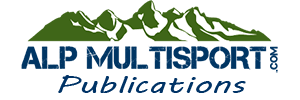Understanding how to balance training and recovery is key to any athlete’s success. As an athlete, you need to work hard to achieve fitness gains but not so hard as to end up in the dreaded overtraining zone. Once you’ve dug yourself into a hole with overtraining, it may take several weeks to climb out; and extreme cases can be season ending. So overtraining is obviously to be avoided. Here are a few tips on how to use heart rate to read the signs. By tuning into your heart rate, you can gain a window into your state of recovery so you have a better idea when to push it or when to back off in your training.

Inability to Elevate Heart Rate during Training
One sign that you may need another recovery workout instead of that planned high intensity workout is how your heart rate responds during a training session. Let’s say you are pushing the envelope with hard training and enter into a workout knowing you’re close to the edge of overreaching. After you do your initial warmup you dive into a set of intervals at a higher intensity level. Although a bit sluggish at first, you seem to be close to the target according to your pace. However, you are unable to elevate your heart rate into the target zone, a fact confirmed by your heart rate monitor. In this case, an inability to elevate your heart rate when you’ve clearly upped the intensity indicates your body has not recovered from previous sessions. Heed the sign and turn that interval session into a short recovery workout. Then go home and conscientiously facilitate further recovery over the next few days before returning to higher intensity training.
Elevated Morning Heart Rate
Ideally, we would like a way to determine how recovered we are before even starting a workout. This is where morning heart rate readings can prove instructive. A simple approach is to take your heart rate each morning before getting out of bed. Keep track of the average over time. If your heart rate is five to ten beats higher than average on a given morning, this is a sign you may need more rest and recovery that day. It could also mean your body is fighting an oncoming virus, in which case eliminating stress in the form of hard training can give your body a chance to nip any sort of oncoming illness in the bud.
Elevated Orthostatic Heart Rate
Another variation of the resting heart rate test is to take your orthostatic heart rate. You can do this in the morning before getting out of bed or after lying down and resting for at least 15 minutes. Start by taking your resting heart rate while lying down. Next, stand up and take your heart rate. Subtract the difference between the lying and standing readings. If the difference is more than 15 to 20 beats; then additional recovery is called for.
These simple techniques can provide measurable insight into your state of recovery. The more experience you gain in using these techniques, the better you will be able to read the nuanced signs of overtraining. Remember, performance gains are attained in between workout sessions when your body adapts. Recovery is essential to this process. Train smart!







